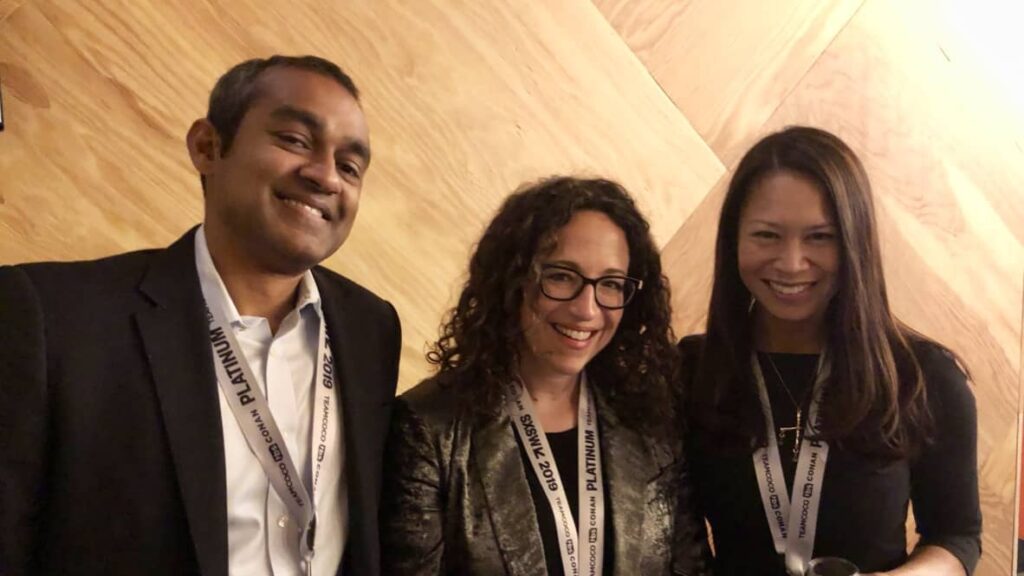What Will the Workforce Look Like in the Future?

By Emmalyn Shaw, Flourish Managing Partner
If you’ve ever freelanced, April is a busy month. Filing taxes is not simple with stacks of 1099s. Neither is getting insurance, or if you drive for a ride-sharing service, keeping track of all your work-related automotive expenses.
Making a living in the gig economy can be challenging, but work is not necessarily more stable for wage-earners or people in salaried jobs. Companies are not just replacing employees with contractors; they are also replacing human work with automation. About 54 percent of the US workforce are not very confident that the work they do will exist in 20 years. By some estimates, 50 percent of the workforce could be contractors in 10 years. The nature of work—our society’s conception of what a “job” is—probably changes every generation. Right now, it’s changing even faster.
As my partners and I wrote when we launched Flourish, technology is driving this change, which often leads to “winner-takes-all” outcomes. The average driver for Uber or Lyft makes $8.55 in profit per hour, and for those in traditional employment, real wages have been stagnant since 1990s.
As investors, we are focused on which technologies are reshaping the labor market—and how. Everyone is watching robotics and AI, but adjacent technologies can have an even bigger impact. The spread of 5G technology, for example, will likely accelerate automation.
“There are private 5G networks popping up all over the place and the places where they are popping up is in warehouses and factories,” futurist Amy Webb said at a talk Flourish hosted during this year's SXSW. “The beauty of a private 5G network is you can eliminate latency problems, so it facilitates working with robots and equipment. The investment we're seeing in 5G will be an accelerant for how quick we automate certain work.”
Amy is a professor at NYU's Stern School of Business and the founder and head of the Future Today Institute, a strategic foresight advisory group for Fortune 500 companies and national nonprofits. Using a wide array of data, Amy builds models to analyze trends affecting different industries—and the American workforce. When it comes to automation, she said at our SXSW panel, digital processes will continue to be automated. That will destabilize certain record-keeping jobs, but it will make everything from legal advice to financial services more affordable.
Meanwhile, jobs in the skilled trades, such as plumbing, construction, auto repair, and electrical contracting, will be safe from automation for a long time. “Robots are not going to take those jobs within our lifetimes, probably,” said Amy. “There's a huge shortage for skilled labor, as well as for salon and massage services and other personal services.”
You can see hows this dovetails with the trend toward more contract positions: Most hair stylists, for example, are freelancers. That's why we invested in Steady, an app that connects workers in the gig economy to flexible opportunities to grow their earnings and achieve their financial goals. As the work world changes, people will need more support piecing together a regular income, accessing their benefits, continually improving their skills, and managing their budget.
There's some reason to believe budget pressures on consumers may change in the future. Looking several years out, Amy sees a variety of trends in personal transportation (ride-sharing, vehicle sharing, and e-scooters) combining with autonomous vehicles and electrification to slowly erode the consumer need for buying a car. “What I think is so interesting is how this relates to the rest of the economy,” said Amy. “If owning your own car is no longer part of the American dream, that has a ripple effect because a lot of our economic system is very much intertwined with the auto industry.”
Finally, Amy emphasized how, in this evolving workforce, investing in education will be more important than most realize. “In this country, we have under-invested in education,” she said, “but a lot of companies are now seeing the value of long-term education in the workforce.”
Pointing to Udacity, an online learning platform that now offers eight-week nano-degrees, Amy suggested digital, continuing education might be “the best possible way to make sure that our workforce, in any country, is going to be prepared for the future and that helps strengthen our economies.”
We're excited by that possibility too. One of our founding beliefs is that, if we aspire for everyone in our society to do better in the future, technology must be used responsibly and in ways that empower people. Amy's SXSW talk gives us a peek at how complicated, interconnected, and exciting that is. We need to keep innovating, but do so in a responsible way, that puts people, and their well-being, at the center of the future we're inventing.
(All trends tracked by quantitative futurologist Amy Webb are open source and available here.)
For more insights from Emmalyn Shaw, follow her on Twitter and Medium.